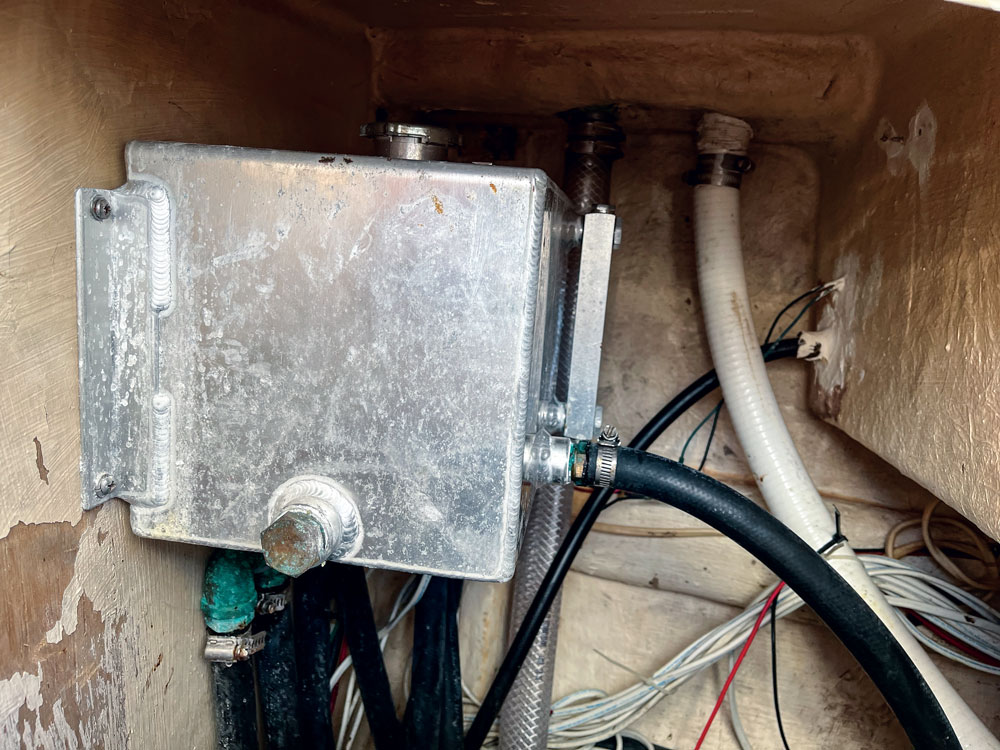Installing a boiler for cold-weather sailing
Heating Quetzal for high-latitude sailing is a complicated project with a big payoff
Each radiator required ¾-inch hoses with an outside diameter of just over an inch to run to and from the boiler. This required quite a bit of dismantling of the boat to access the bottoms of lockers and the bilge and we had to drill several holes to route the hoses. To maintain the water integrity of bulkheads and lockers, we sealed the cut surfaces of each hole with epoxy. As we routed the hoses, we attempted to avoid any high spots in the hose as these are prone to collecting air and could impede flow. Any high points require a fitting to allow air to escape, each radiator has one, and they can be added if a high spot is unavoidable.

With the system installed we needed to commission it. This consisted of filling the system with water, flushing air and looking for leaks. You can just add water to the system and run it cold, but we opted to pump water through the system with a utility pump. We added servicing port valves on both sides of the pump and boiler to allow them to be removed from the circuit and we added a small utility pump connected with a garden hose. The utility pump pushed out any air in the system and flushed debris.
The commissioning process was particularly frustrating. We couldn’t find any leaks, but we couldn’t get the system to flow water. After a few hours of digging around the boat, we found a kinked hose in one of the lockers. Just like a garden hose, a small kink can totally stop the flow. Once we were satisfied with the water system, we pulled out the water and replaced it with a mixture of water and boiler antifreeze.
With the commissioning process completely, we turned the system on. These systems go through a defined start up sequence. First, you hear the fuel pump kick in, next the boiler exhaust fan starts and finally the boiler lights. The boilers are not silent, especially outside the boat— it starts with a whoosh and settles into a quiet hum. After maybe 15 minutes, the boiler will heat the coolant. Once the coolant is hot, the system turns on the radiator fans and the heat flows.
The system worked well, but we took it a step further by adding a heat exchanger to the heating loop to allow the engine cooling loop to heat the water. With this in place, the boat can be heated with the engine, eliminating the need to heat the engine and boiler at the same time.
The system stood up to the rigors of cold high latitude cruising, making Quetzal toasty warm in almost any condition, with the boiler or engine. One caveat, boats and especially hatches and portlights are not well insulated. Although we could make the boat warm, the hatches, portlights and hull remained cold, so we noticed those surfaces collecting condensation. It wasn’t a huge issue, but one worth noting.
Sources:
Dickinson Marine, www.dickinsonmarine.com
Webasto, www.webasto.com
Erbspaecher/Espar, www.eberspaecher-climate.com
Sure Marine, suremarineservice.com

Comments